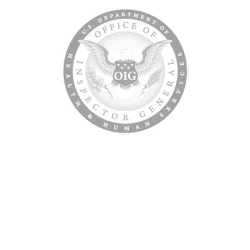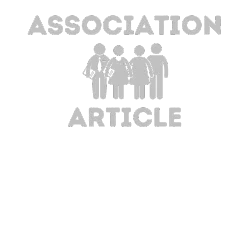News Digest: OIG Weighs in on CMS’ Use of Data on Nursing Home Staffing
In August, 2018, the Office of the Inspector General (OIG) of the Department of Health and Human Services (HHS) took up investigating the payroll-based journal program. Whether triggered by recent publicity in the New York Times or already in the works, OIG developed a work plan and has produced two related reports.
The purpose of these studies per OIG is:
We will examine nursing staffing levels reported by facilities to the Payroll-Based Journal and CMS’s efforts to ensure data accuracy and improve resident quality of care by both enforcing minimum requirements and incentivizing high quality staffing above minimum requirements.

CMS Use of Data on Nursing Home Staffing: Progress and Opportunities To Do More
The OIG recommended – and CMS concurred – that CMS should:
- provide data to consumers on nurse staff turnover and tenure
- ensure the accuracy of non-nurse staffing data used on Care Compare
- consider residents’ level of need when identifying nursing homes for weekend inspections and
- take steps to strengthen oversight of nursing home staffing.
Published March, 2021
Office of the Inspector General. “CMS Use of Data on Nursing Home Staffing: Progress and Opportunities To Do More” Department of Health and Human Services, OEI-04-18-00450. 9 March 2021.

OIG Finds Shortcomings in CMS Use of Nursing Home Staffing Data
In response to an evaluation by the U.S. Department of Health and Human Services Office of Inspector General (OIG), CMS stated last week that it will continue working to publicly report on nurse staff turnover and tenure, as required by federal law.
While acknowledging the workload of COVID, OIG recommended four actions by CMS: (1) provide data to consumers on nurse staff turnover and tenure, as required by Federal law; (2) ensure the accuracy of non-nurse staffing data used on Care Compare; (3) consider residents’ level of need when identifying nursing homes for weekend inspections; and (4) take additional steps to strengthen oversight of nursing home staffing.
Lips, Jonathan. “OIG Finds Shortcomings in CMS Use of Nursing Home Staffing Data.” LeadingAge Minnesota, 17 Mar. 2021, www.leadingagemn.org/news/oig-finds-shortcomings-in-cms-use-of-nursing-home-staffing-data.

CMS Use of Data on Nursing Home Staffing: Progress and Opportunities to Do More (OIG Report)
This review focuses on the Centers for Medicare & Medicaid Services’ (CMS’s) use of data on nursing home staffing from April 2018 through March 2019— before the COVID-19 pandemic. (OIG) also noted recent CMS actions through December 2020. Since November 2016, CMS has required nursing homes to submit payroll-based staffing data, including data on nurses and non-nurses.
In April 2018, CMS began updating staffing measures on Nursing Home Compare, a public website, with these staffing data. In December 2020, CMS replaced Nursing Home Compare with a new website called Care Compare. Care Compare includes the same staffing information that had been found on Nursing Home Compare.
Specifically, consumers can search nursing homes on the basis of location and compare quality of care and staffing. The usefulness of this information to consumers depends on the extent to which it is complete and accurate. Further, CMS also works with State survey agencies to monitor nursing home compliance with Federal requirements, including those for staffing.
Madison, Mary. “CMS Use of Data on Nursing Home Staffing: Progress and Opportunities to Do More (OIG Report).” SimpleLTC, 16 Mar. 2021, www.simpleltc.com/cms-use-of-data-on-nursing-home-staffing-progress-and-opportunities-to-do-more-oig-report.

Staffing takes center stage
The release last month of three high-profile nursing home reports garnered much attention. First, a UCLA-Harvard Report used PBJ data to analyze nursing staff turnover in nursing homes. Then, an OIG Report examined the use of nursing home staffing data by CMS. Last came a New York Times Report on misleading nursing home ratings.
Although the findings and limitations of each report are being debated, what can’t be questioned is this: staffing has become a focal point in nursing home care and with it an increased scrutiny on staffing data.
“Tips for the PBJ Pro: Staffing Takes Center Stage.” SimpleLTC, 15 Apr. 2021, www.simpleltc.com/newsletter-expert-tips-for-the-pbj-pro-q2-2021-edition.

OIG Work Plan Monthly Updates (November-December 2018, January-February 2019)
von Briesen continues to monitor the United States Department of Health and Human Services, Office of Inspector General (the “OIG”) Work Plan to provide insight into emerging legal trends in health care. Health organizations are advised to use the Work Plan to identify the OIG’s areas of interest and enforcement priorities, and to review and update policies and procedures accordingly.
This Legal Update summarizes some of the significant OIG Work Plan updates released for November 2018, December 2018, January 2019, and February 2019.
CMS mandates that nursing facilities provide sufficient licensed nursing staff 24-hours a day and have a registered nurse present for at least 8 consecutive hours a day, 7 days a week. Staffing data is submitted to CMS’s Payroll-Based Journal. CMS uses this data to analyze staffing patterns and to populate staffing information in the Nursing Home Compare website. The OIG will produce two reports about this data. The first report will be a data brief that describes nursing staffing levels reported by facilities. The second report will examine the efficacy of CMS’s efforts to ensure the self-report data’s accuracy and improve quality of care. Long term care providers should review their self-reported staffing information to ensure its accuracy.
“OIG Work Plan Monthly Updates (November-December 2018, January-February 2019).” The National Law Review, 27 Feb. 2019, www.natlawreview.com/article/oig-work-plan-monthly-updates-november-december-2018-january-february-2019.


